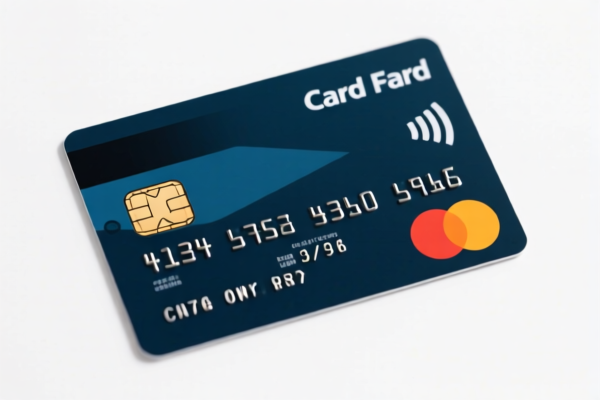| HS Code | Official Doc | Tariff Rate | Origin | Destination | Effective Date |
|---|---|---|---|---|---|
| 8523210000 | Doc | 55.0% | CN | US | 2025-05-12 |
| 8523520010 | Doc | 55.0% | CN | US | 2025-05-12 |
| 8531100035 | Doc | 56.3% | CN | US | 2025-05-12 |
| 8531100045 | Doc | 56.3% | CN | US | 2025-05-12 |
| 4911998000 | Doc | 37.5% | CN | US | 2025-05-12 |
| 4911996000 | Doc | 37.5% | CN | US | 2025-05-12 |
| 4908100000 | Doc | 37.5% | CN | US | 2025-05-12 |
| 4908900000 | Doc | 37.5% | CN | US | 2025-05-12 |




Access Card
An access card is a portable identification card used to control and track entry to restricted areas. It functions as a key, granting or denying access based on pre-programmed data and verification methods.
Material
Access cards are commonly constructed from:
- PVC (Polyvinyl Chloride): The most prevalent material due to its durability, cost-effectiveness, and suitability for printing and encoding.
- PET (Polyethylene Terephthalate): Offers higher temperature resistance and durability compared to PVC, often used in harsher environments.
- Proximity Cards: Often embedded with antennas and are typically made of a composite material to facilitate wireless communication.
- Smart Cards: Incorporate an integrated circuit (IC) chip and are constructed with materials that support chip functionality and data storage.
Purpose
The primary purposes of access cards include:
- Security: Controlling physical access to buildings, rooms, or sensitive areas.
- Time and Attendance Tracking: Recording employee entry and exit times.
- Identification: Serving as a visual means of identifying personnel.
- Data Access: Providing access to computer systems or networks (smart cards).
- Payment: Functioning as a payment method (proximity cards with payment functionality).
Function
Access cards operate through various technologies:
- Magnetic Stripe: The oldest technology, storing data on a magnetic stripe read by a card reader. Prone to wear and security vulnerabilities.
- Barcode/QR Code: Simple and inexpensive, but easily duplicated and lack advanced security features.
- Proximity (RFID/NFC): Utilize radio-frequency identification (RFID) or near-field communication (NFC) to communicate with a reader when in close proximity.
- Smart Card (Contact/Contactless): Employ an integrated circuit chip for secure data storage and processing. Contact cards require physical insertion into a reader, while contactless cards communicate wirelessly.
- Wiegand: A common interface standard used to transmit access control signals from a card reader to a controller.
Usage Scenarios
- Corporate Offices: Controlling access to buildings, departments, and server rooms.
- Educational Institutions: Managing access to classrooms, labs, and dormitories.
- Healthcare Facilities: Restricting access to patient areas, pharmacies, and medical records.
- Government Buildings: Securing sensitive areas and controlling personnel access.
- Transportation Hubs: Providing access to restricted areas for employees and authorized personnel.
- Hotels: Room access for guests.
Common Types
- Proximity Cards: 125 kHz (older, less secure) and 13.56 MHz (more secure, often used with NFC).
- Smart Cards: Contact and contactless versions, often used for multi-factor authentication and secure data storage.
- Employee Badges: Typically include a photo, name, and company logo, often integrated with access control systems.
- Visitor Badges: Temporary badges issued to visitors, with limited access privileges.
- Multi-Technology Cards: Combine multiple technologies, such as proximity, smart card, and barcode, for increased functionality and compatibility.
Access cards fall under the category of media for the recording of sound or other phenomena, whether or not recorded, including matrices and masters for the production of discs. Depending on the specific type, they can also be classified as smart cards.
Here are the relevant HS codes based on the provided reference material:
- 8523210000: This HS code covers discs, tapes, solid-state non-volatile storage devices, and “smart cards” and other media for the recording of sound or of other phenomena, whether or not recorded, including matrices and masters for the production of discs, but excluding products of Chapter 37. It has a basic tariff of 0.0%, an additional tariff of 25.0%, and a tariff of 30.0% after April 2, 2025, resulting in a total tariff of 55.0%. This is applicable to magnetic media cards incorporating a magnetic stripe.
- 8523520010: This HS code also covers discs, tapes, solid-state non-volatile storage devices, “smart cards” and other media for the recording of sound or of other phenomena, whether or not recorded, including matrices and masters for the production of discs, but excluding products of Chapter 37. Specifically, it refers to semiconductor media: “Smart cards” Unrecorded. It has a basic tariff of 0.0%, an additional tariff of 25.0%, and a tariff of 30.0% after April 2, 2025, resulting in a total tariff of 55.0%.
It is important to determine whether the access card is a magnetic media card or a semiconductor “Smart card” to correctly classify it under either 8523210000 or 8523520010. Both codes have the same tariff structure: 0.0% basic tariff, 25.0% additional tariff currently, increasing to 30.0% after April 2, 2025, for a total of 55.0%.
Customer Reviews
No reviews yet.